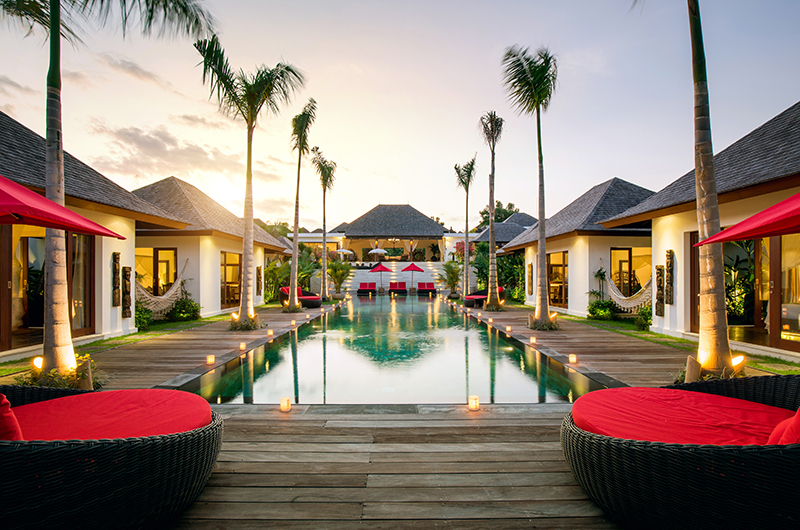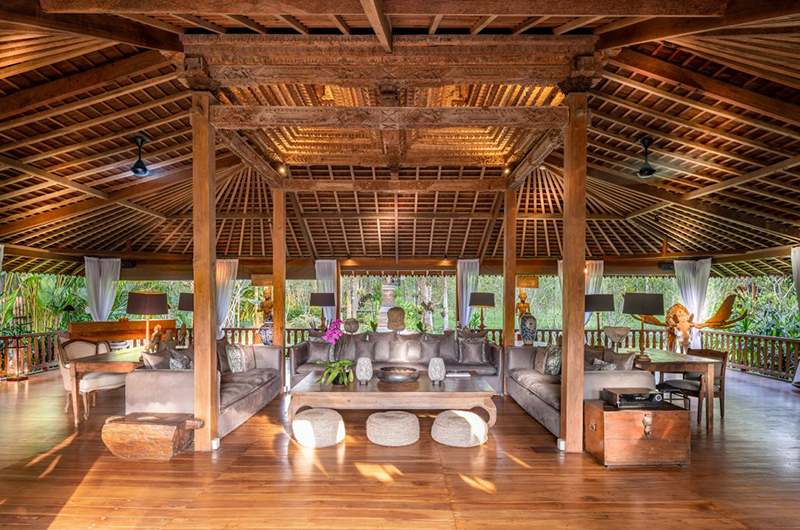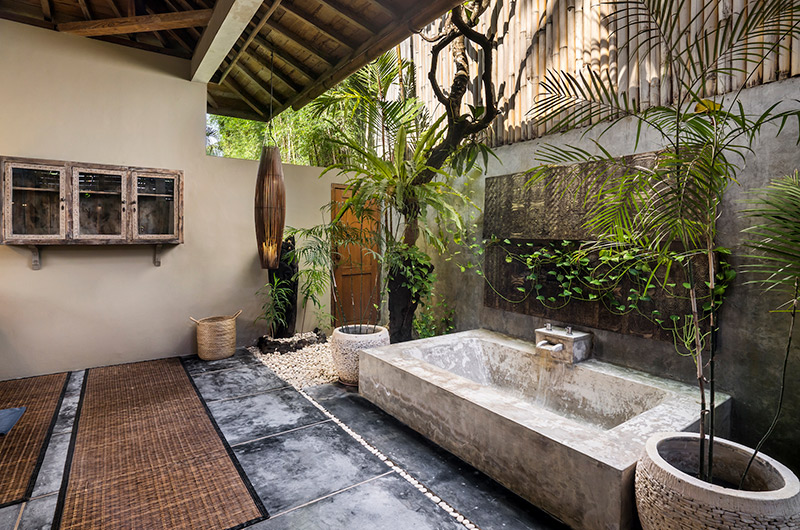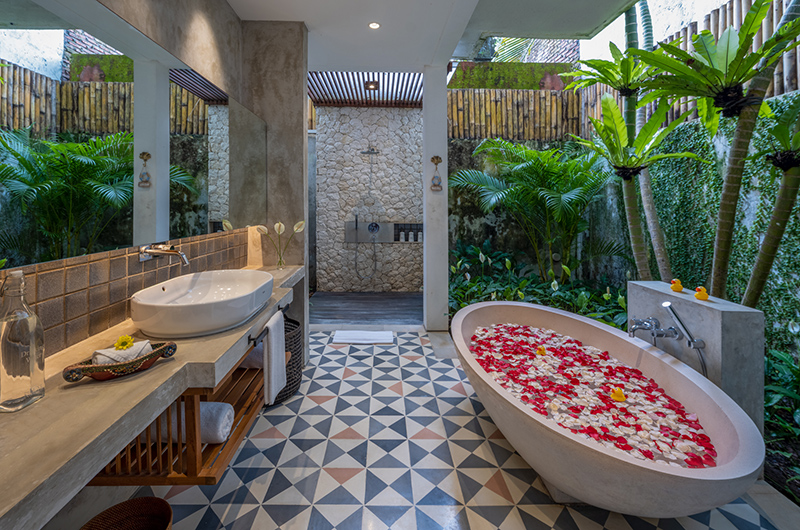With its lush rainforests, sandy beaches, dreamy rice fields and majestic mountains, Bali is one of the most beautiful places on earth. The island has even been described as the ‘Last Paradise’. It is not surprising that such stunning scenery has also inspired some incredible architecture.
Balinese architecture is a beautiful reflection of the Balinese way of life and the sacred laws that govern all life on the island. The culture centres around the concept of Tri Hita Karana – harmony between humans, nature and gods. These deep and meaningful connections are also present in all aspects of the local architecture.
Here we explore some of the most unique and beautiful features of Balinese architecture.
The Balinese Compound
Traditional Balinese homes are all built following the same basic layout: a compound of standalone pavilions surrounded by a perimeter wall. The walls are thought to ward off evil spirits and for the same reason, the gates are typically framed by statues depicting protective spirits. This same layout has been adopted to many villas and resorts.
With pavilions connected through pathways darting through lush gardens, guests get to experience Bali’s tropical indoor/outdoor lifestyle to the fullest. For a more traditional take on Balinese architecture, consider visiting Penglipuran, a beautifully preserved Balinese village located in central Bali.
Alang-Alang Roofs
Thatched roofs are one of the most prominent features of Balinese buildings. These roofs are made from alang-alang, or cogongrass, a plant which is ubiquitous in Bali. The grass is known for its tough and durable texture, making it ideal for the island’s humid climate, even during the rainy season.
A traditional alang-alang roof is made by weaving the grass into strips which are then layered on a wooden frame. This method has been used in Bali for centuries so it’s little wonder that it has become such an iconic part of local architecture. From the clifftops of Uluwatu to the lakeside beauty of Ulun Danu Bratan, Bali’s most iconic temples are crowned with alang-alang roofs. Using similar techniques in modern villas and resorts often yields Instagram-worthy results, as seen in stunning examples like Villa Jewel, which is showcased as the featured image.
Open Plan Living
As already established, Balinese homes consist of several standalone structures rather than a single building. Typically, a specific pavilion positioned to the front of the compound is used to receive guests. The pavilion will usually have an open plan layout. This space beautifully reflects the Balinese approach to life – a place where you connect with others while also being at one with nature.
Similarly, many villas in Bali will have an open plan living room that allows guests to socialise in the shade, surrounded by nature. The opulent Villa Nag Shampa (first image below) epitomises this concept.
Wood and Stone Carvings
Bali is an island of artists. The Ubud region in particular has long been famed for its creativity: Western visitors have been flocking here since the 1930s when German painter Walter Spies put the region on travellers’ radars. That artistic heritage is also strongly present in the local architecture and home design.
Balinese temples are adorned with intricate sculptures and carvings rendered in stone and wood. Balinese homes also feature beautiful carvings, both in the family shrine and in the statues and even the gate that welcomes guests to the property. Balinese artistry is on full display at Besakih Temple and Ubud Palace, both of which feature stunning carvings and sculptures.
Natural Materials
The Balinese way of life is strongly influenced by nature, with a strong emphasis placed on achieving harmony with the environment. Balinese buildings are usually made with natural materials, including bamboo, alang-alang, teakwood and stone. These sustainable materials are able to endure the local climate, which can be swelteringly humid. The materials are also very aesthetically pleasing, allowing the buildings to blend in with the surrounding scenery.
Perhaps the most famous example of sustainable design in Bali is Green School, a stunning bamboo structure built in the jungle.
Tropical Gardens
With life effortlessly flowing between indoor and outdoor spaces, gardens are an integral part of Balinese building design. Balinese gardens are a beautiful dance between open spaces and more dense vegetation. This will often mean manicured lawns giving way to luscious flowers (think frangipani, Chinese hibiscus and bougainvillea), with tall trees providing much needed shade amid the tropical weather.
Decorative walkways, serene ponds, shady pergolas and of course, Balinese shrines are all integral parts of Balinese landscape design. The Pura Taman Saraswati Temple in Ubud is an amazing place to admire Balinese landscape design. Notice how strongly the entrance at Villa Mata Air has been influenced by the temple.
Open Air Bathrooms
While open air bathrooms are not a traditional Balinese concept, this lush layout has become practically synonymous with luxe Balinese living. An open plan bathroom allows you to enjoy a relaxing bath, or a refreshing shower surrounded by tropical greenery. After nightfall, you can even enjoy a soak under the stars (don’t worry – the setup is also completely private!).
While they are more of a modern concept mostly used in villas and resorts, open plan bathrooms also incorporate more traditional elements of Balinese design. The greenery in these luxe bathrooms will often mimic a Balinese garden and the natural materials (from bamboo to natural stone and teak) give nods to authentic Balinese buildings.
Spa Rooms
In Bali, wellness is not just a buzz word: it is a way of life and a tradition that has been passed down through generations. Enjoying an authentic Balinese massage has become a bucket list item for many travellers – but the island’s best spas are worth visiting for their beautiful design alone. The island’s spas feature distinctly Balinese elements designed to soothe the senses, including sustainable bamboo architecture, peaceful water elements and lush tropical greenery.
The breezy open plan layout allows you to enjoy a massage while being surrounded by the soothing sounds of nature. The spa at Permata Ayung is easily one of the most beautiful spas on the island. This amazing bamboo spa was designed by Ibuku (the same company that designed the iconic Green School) and overlooks the sacred Ayung River below.
Balinese architecture is an amazing reflection of the local culture. Staying in a villa inspired by the island’s ancient traditions is a unique way to immerse yourself in the local way of life. It’s an experience you will treasure forever. If you would like to stay in a villa that perfectly captures Bali’s unique culture and beauty, get in touch with our villa experts.

























